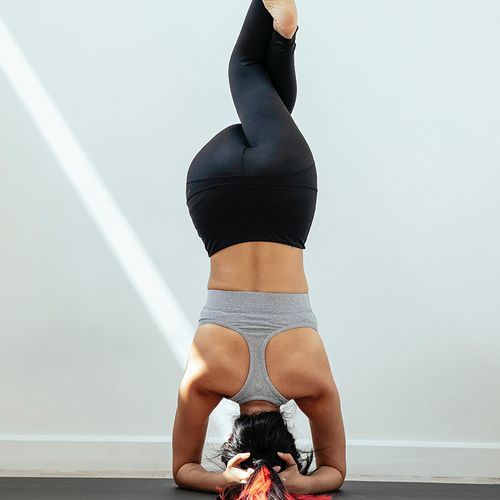Falls are a primary cause of injury, especially as we get older. Reduce the risk of 1 falling and the bone fractures that can result-with exercises that improve balance, strength and coordination. Before starting an exercise program, check with your doctor.
- Strengthen core muscles in the abdomen and low back).
Equipment: Inflatable exercise ball, about $20 at sporting-goods stores.
To start: Holding on to a counter or other stable object, sit on the ball, feet
flat on the floor. Rock gently side to side, then forward and back. Continue for one minute, and
gradually increase to 10 minutes.
Advanced: Do the moves above while lifting one foot off the floor slightly and/or without holding on to anything.
- Improve awareness and sensitivity.
Helpful habit: To heighten the sensitivity of your feet, walk barefoot as often as possible-in your home or over a safe but slightly uneven surface, such as a lawn, beach or plastic simulated pebble mat.
Do anywhere: When you are walking, plan your path-step on each crack in the sidewalk or on alternating tiles of a linoleum floor. This trains you to notice obstacles in your path.
- Build hip and leg strength.
To start: Sit in a chair and lift one knee as high as is comfortable, hold for a count of three, then lower. Do 10 lifts with each leg.
Intermediate: Stand and hold on to a counter with one or both hands. – Bending your leg, lift one knee as high as is comfortable and hold for a count of 10. Repeat 10 times then switch legs.
Advanced: Standing and holding on to a counter, lift your left knee above waist height, then lunge forward with the left foot in an exaggerated step. Both knees will be slightly bent as your foot lands. Repeat 10 times, then switch legs. When mastered, do it without holding on.
Do anywhere: When walking, concentrate on pushing off with the big toe of the back foot. This improves the speed and coordination of your gait.
- Gain confidence in movement.
To start: Placing both hands on a wall at shoulder level, step back until your arms are almost straight. Lean slightly toward the wall until you begin to lose your balance (to simulate the start of a fall, then quickly step forward with one foot to prevent falling, Keep your hands on the wall for added security.
Advanced: Stand farther away from the wall to increase the tipping angle, with hands raised to shoulder level but not touching the wall. Lean forward and step quickly, as above. If necessary, catch yourself by gently placing your hands on the wall.
Do anywhere: Incorporate physical activity into your routine as much as possible.
Examples: Climb stairs two at a time...use a basket, not a cart, when you shop
How Much Do You Sweat?
Figure out your sweat rate so you know how much water to drink when exercising Weigh yourself naked before and immediately after exercising for an hour at the most intense level you would normally exercise. Convert the weight lost to fluid ounces.
Example: A one-pound (16-ounce) loss would mean you sweated about 16 ounces of fluid, and that you need to take in 16 ounces per hour of fluids while exercising. Most people need eight ounces of fluid for every 15 minutes of exercise.
Exercise Cuts Men's Risk for Fractures
When researchers interviewed 2,205 men over a 35-year period, sedentary men were two-and-a-half times more likely to break a hip than were men who exercised or played sports vigorously at least three hours weekly (Studies show similar results for women.)
Theory: Physical activity increases skeletal strength and muscle mass.
If you're sedentary: Ask your doctor to recommend an exercise program.
